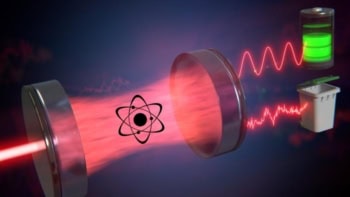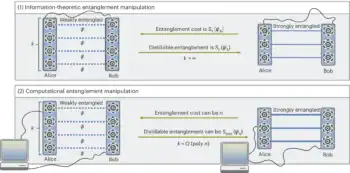As every physicist knows, the speed of light in a vacuum is about 300, 000 kilometres per second. Although light travels fractionally slower through matter, it still propagates at speeds measured in thousands of metres per second. However, by exploiting a quantum effect called 'electromagnetically induced transparency', Lene Vestergaard Hau of the Rowland Institute for Science in the US and co-workers have reduced the speed of light in a gas of ultracold sodium atoms to 17 metres per second - 20 millions times slower than the speed of light in vacuum (Nature 397 594).
Electromagnetically induced transparency relies on interference between different electronic transitions in an atom and has been used to make opaque media transparent at certain wavelengths in the past. In the latest experiment the sodium atoms were trapped and cooled in a magneto-optic trap. The atoms were cooled until they collapsed into a Bose-Einstein condensate – a special state of matter in which all the atoms are in the same quantum state and are described by a single wavefunction. Hau and co-workers then tuned a ‘coupling’ laser to a transition between two hyperfine states in the atoms. Under the right conditions they found that this slowed down a ‘probe’ laser beam travelling at right angles to the coupling laser. The sample also showed exceptionally large optical nonlinearities which could be useful in optical switching applications. The team also believe that it might be possible to slow the light even further – to speeds measured in centimetres per second.



